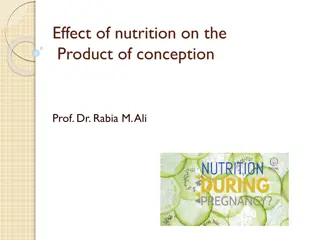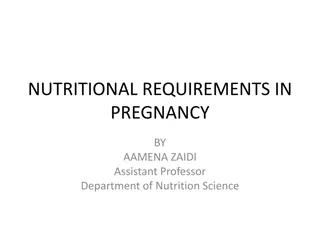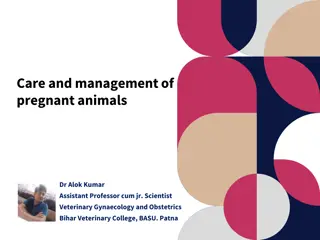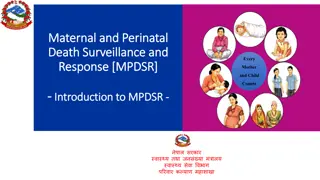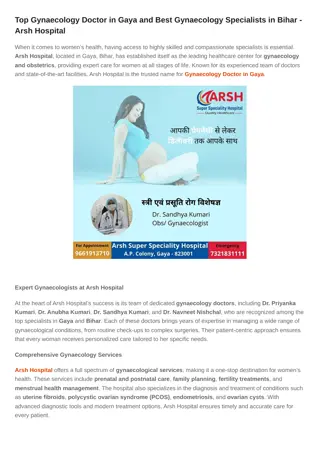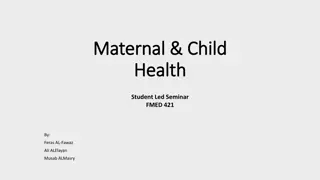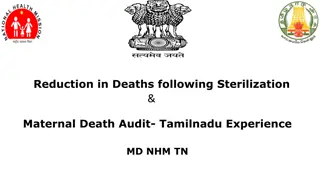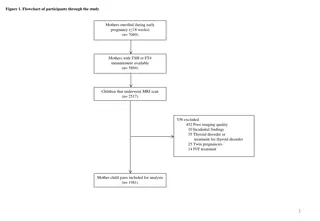Understanding Maternal Recognition of Pregnancy in Veterinary Gynaecology
The phenomenon of Maternal Recognition of Pregnancy (MRP) in polyestrous species plays a crucial role in preventing luteolysis and establishing pregnancy. This process involves the presence of viable embryos signaling to block luteolysis, allowing the pregnancy to continue. Factors such as IFN-tau in ewes and cattle contribute to the mechanisms of MRP, affecting hormone regulation and maintaining pregnancy. Understanding MRP is essential in veterinary gynaecology for successful breeding outcomes.
Download Presentation

Please find below an Image/Link to download the presentation.
The content on the website is provided AS IS for your information and personal use only. It may not be sold, licensed, or shared on other websites without obtaining consent from the author. Download presentation by click this link. If you encounter any issues during the download, it is possible that the publisher has removed the file from their server.
E N D
Presentation Transcript
Maternal recognition of pregnancy Dr Alok Kumar Assistant Professor cum Jn. Scientist Veterinary Gynaecology and Obstetrics alok9alright@gmail.com
Definition of MRP Presence of viable, developing embryo(s), prevents CL from regressing and therefore in polyestrous species inhibits return of estrus. The phenomenon is describes as Maternal recognition of pregnancy (MRP) by Short (1969) The critical period for signaling by the conceptus to block luteolysis and allow pregnancy to be established is called Maternal recognition of pregnancy (MRP).
Luteolysis in cow and ewe Frequency of PGF2 release Threshold 05 pulses/24 hours Pregnant ewe 1.3 pulses/24 hours ( during 14 15 days) Non pregnant ewe 7.6 pulses/24 hours
MRP in EWE The antiluteolytic factor produced by the ovine conceptus is characterized by Protein, molecular weight of 19- 24 Kda Ovine trophoblast protein (oTP-1) Now classified as tau interferon (oIFN-tau) Maximum secretion occurring between days 10 of gestation
MRP in cattle The antiluteolytic factor produced by the bovine conceptus is characterized by: Protein, molecular weight of 24,000 da Bovine trophoblast protein (bTP-1) Now classified as tau interferon (bIFN-tau) Maximum secretion occurring between days 16 and 19 of gestation It is first secreted at the time of elongation of the blastocyst Continues to be secreted until day 38 of gestation EPSI Endometrial PG synthetase inhibitor reduced PG production
Mechanism of MRP in cow and ewe IFN-tau secreted by embryo 1. silencing the transcription of the estrogen receptor alpha gene in uterine luminal and superficial glandular epithelial 2. Reduction of Estrogen-induced expression of oxytocin receptors in these cells. 3. Indirectly suppresses the expression of oxytocin receptors in endometrial epithelial cells. 4. Oxytocin of luteal and pituitary origin can thus no longer bind to the uterus 5. Reduction in the pulsatile secretion of PGF2
MRP in Goat The caprine conceptus secretes a protein originally designated cTP-1 Recently named as cIFN-tau secreted between days 16 and 21 of gestation.
MRP pig Spacing and elongation of conceptus Production of E2 E2 acts as Luteotrophic factor Endocrine exocrine model of MRP
MRP in pig Spacing - Post uterine entry on day 4, embryos start migrating throughout both uterine horns so that by day 12 they have more or less become evenly distributed. porcine conceptus has been shown to convert progesterone to estrone and estradiol-17 beta. The production of estrogens increases with the rapid elongation of the blastocyst, which may reach a length of 80 to 100 cm each between days 12 and 15. Spacing and Elongation - the conceptuses are able to influence locally a large surface of the endometrium
MRP in pig The luteotrophic effects of estrogen include 1. maintenance of LH receptors in the CLs 2. Secretion of prostaglandin E2 to protect the CLs against the luteolytic action of PGF2 3. Altering the transport of PGF2 from an endocrine (towards the vasculature) to an exocrine (into the uterine lumen) direction 4. PreventingPGF2 from reaching the CLs. Estrogen-induced prolactin receptors in the endometrium might facilitate this redirecting. The fate of the intrauterine PGF2 - fetal membranes readily metabolizes it to PGFM (15-keto-13, 14-dihydro-PGF2 ), which is inactive.
MRP in Horses Exact machanism in not yet clear Involves 1. Estrogen production 2. Migration of conceptus 3. Suppression of prostaglandin synthatase 2 activity
MRP in Horses Suppression of uterine PGF production (till day 16) includes 1. conceptus-directed downregulation of endometrial prostaglandin synthase 2 activity a posttranscriptional inhibition of endometrial oxytocin-receptor expression 2. Migration of the spherical conceptus within the uterine lumen until it becomes fixed at 16 to 18 days of gestation at the base of the uterine horn. E2 indirectly influences production of other hormones and substances necessary for MRP
References and suggested reading Books Reproduction in Farm Animals (E.S.E. Hafez & B. Hafez) Veterinary Reproduction and Obstetrics (David E. Noakes) Reproductive Technologies in Farm Animals (Ian Gordon) Articles Short RV. Implantation and the Maternal Recognition of Pregnancy in Foetal Autonomy. London: J & A Churchill; 1969. Bazer FW. J Anim Sci and Biotechn. 2013;4:23. Stout TAE. Theriogenology. 2016;86:349.





